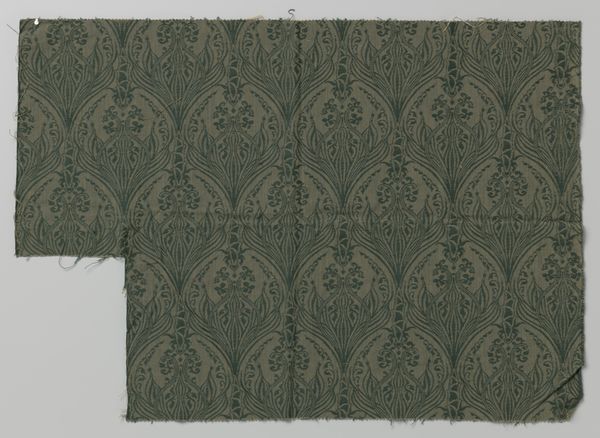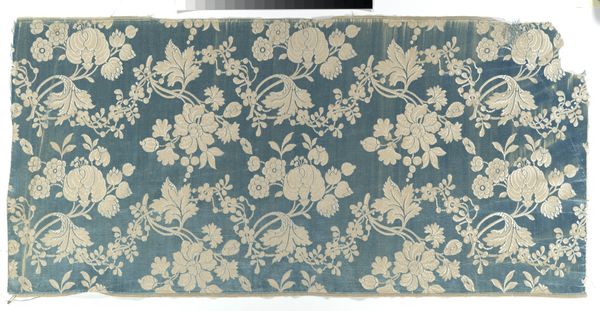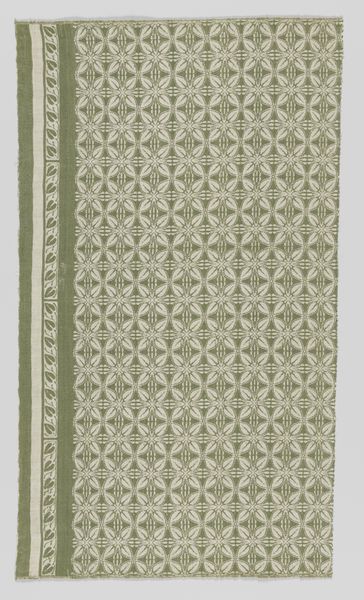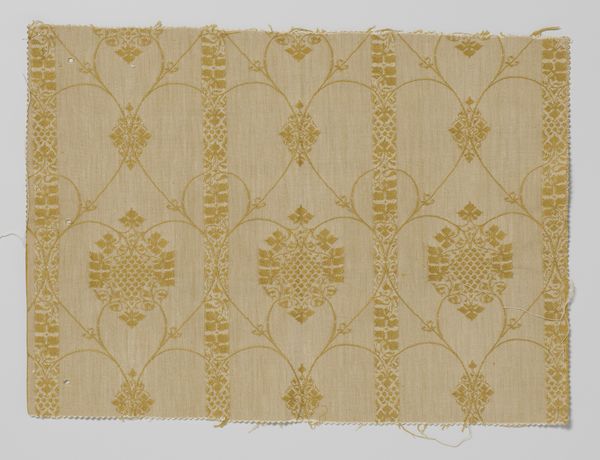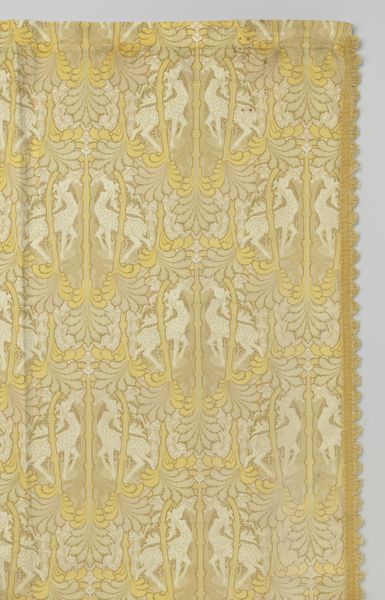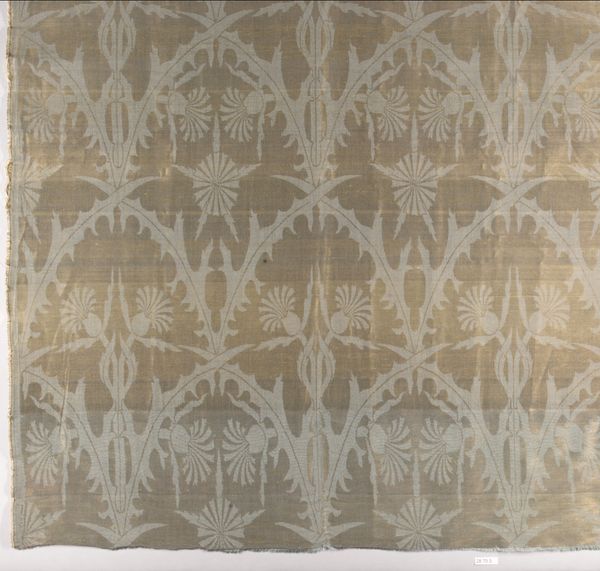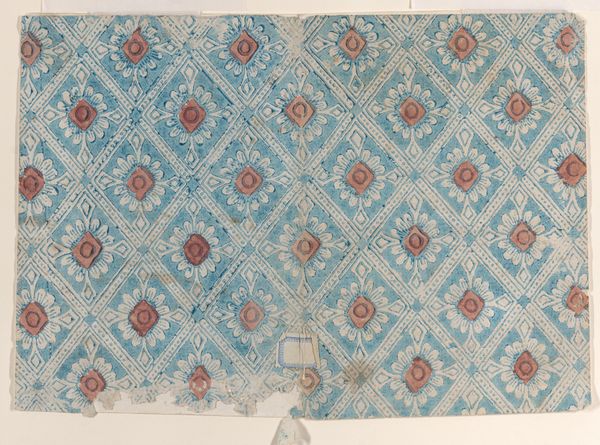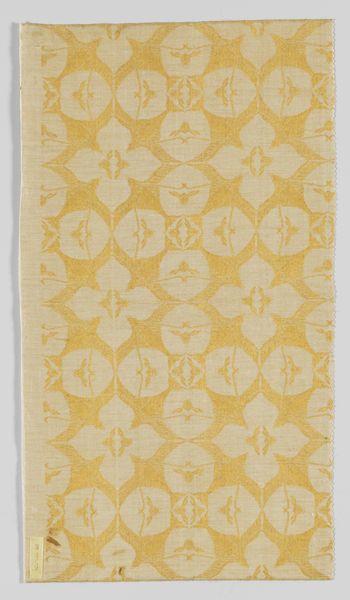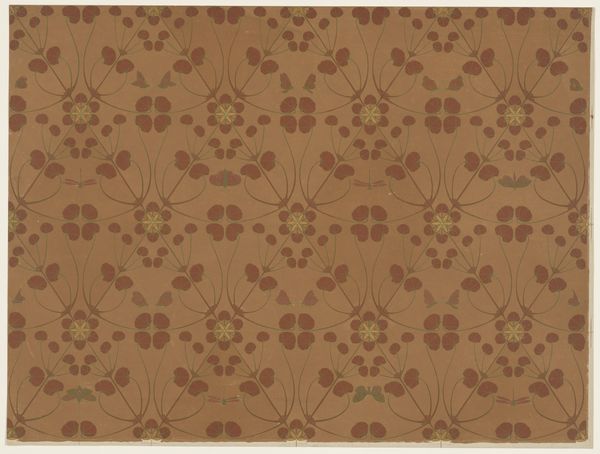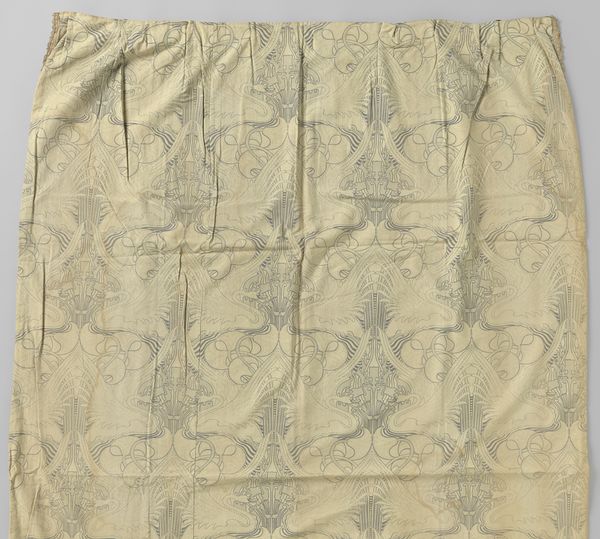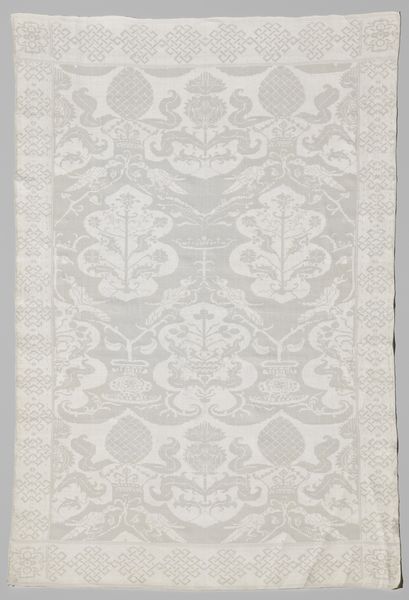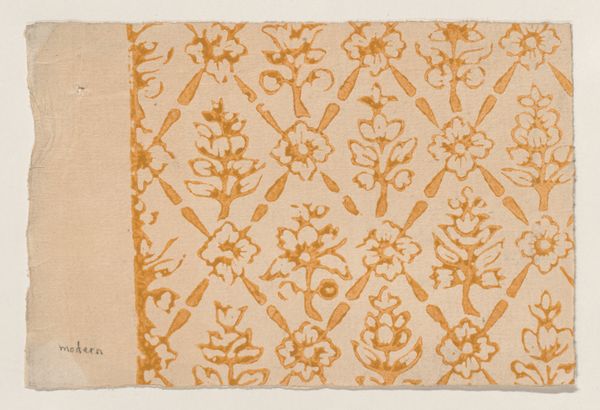
textile
#
art-nouveau
#
textile
#
pattern repetition
#
textile design
#
decorative-art
Dimensions: height 240.0 cm, width 168.0 cm
Copyright: Rijks Museum: Open Domain
Editor: Here we have an amazing Art Nouveau piece, a printed curtain from around 1900 featuring swans and irises, currently residing at the Rijksmuseum. The color palette is so muted, almost dreamlike. What sort of cultural ideas can you draw out of this kind of work? Curator: Ah, yes, a portal, quite literally, designed to evoke more than just a barrier, but an entrance into another state of mind. Consider the swan; what does it mean to you? Is it graceful? Pure? Editor: Graceful, definitely. And perhaps a little melancholic? Curator: Exactly! In the fin de siècle, the swan held complex, often contradictory, meanings. Purity, yes, but also transformation, even death. The water lily, or iris, evokes similar depths, symbolizing faith, hope, and wisdom. But more importantly, they are a link. Editor: A link to what? Curator: Consider how integral textile art was in articulating design principles of Art Nouveau movement across different European societies. The stylized motifs you see are an expression of collective unconscious longing for nature, spiritualism, and transformation amid growing industrialisation and materialism. And that repetition, what emotional landscape does it conjure in your mind? Editor: A sort of comforting rhythm? Or perhaps stifling… a gilded cage? Curator: Perhaps both. Art Nouveau often existed in this duality, a celebration and critique of modernity itself. And that tension is powerfully captured within even seemingly simple repeating motif of textile art. Editor: It’s amazing how much symbolism and history can be embedded in what appears to be a simple decorative object. Curator: Indeed. A reminder that even the most functional objects can carry profound cultural and emotional weight.
Comments
No comments
Be the first to comment and join the conversation on the ultimate creative platform.


